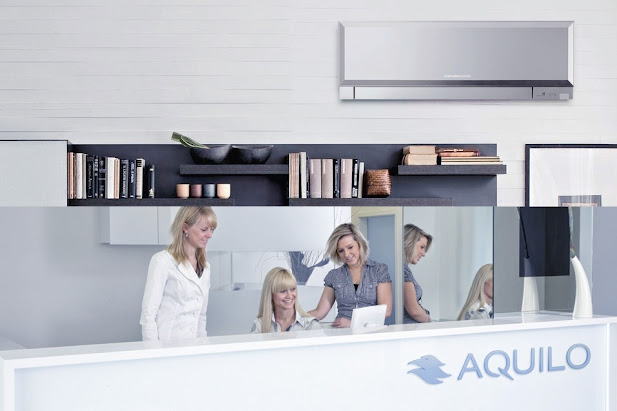Air Conditioning
In ordinary conversation, when the term air conditioning is mentioned, people automatically take it to mean cooling room temperature. Technically speaking, though, air conditioning is the process of controlling room temperature through various means that involve ventilation, heating and cooling. In construction, it is referred to as HVAC.
What is air conditioning?
You know air conditioning makes you feel cold. But air conditioning is more than just cooling. It means keeping the temperature and humidity (moisture content) of the air in an enclosed space, be it a single room or an entire building, at a level just right for the comfort of the people inside. It also means circulating air and adding moisture if needed. In summer, this means removal by passing air over cold tubes that collect water from the air, just as water droplets condense on a cup of cold water on a hot, humid day. In fact, we would roughly say that air conditioning means creating a comfortable industrial climate. In this article we will be discussing cooling only.
In dry climates the air can simply be cooled. A radiator may be nothing more than a large fan that pulls hot, dry air into a water-dampened fiber mat. The air is cooled as it evaporates the water. It dries to begin with the added moisture will not cause discomfort. (This is not the case in humid climates)
Air conditioning has many uses in addition to keeping us comfortable. Many industries rely on it to keep the air in their factories clean, cool, and at the right humidity level. For example, textile fibers such as wool and cotton expand or contract as the moisture content in the air changes. This causes differences in fabric quality. Excessive moisture in the air - or even on a worker's fingertips - will corrode sensitive metal parts such as rocket components or precision instruments. The wrong temperature can denature a set of antibiotic culture. Proper air conditioning prevents this accident.
As men is interest in science grew so did the number of schemes for getting cool. There were hundreds of ideas, but none of them really worked. In fact, many of the schemes made people feel worse because they added large amount of water to the air. Air is like a sponge. It will soak up water and make people feel sticky and uncomfortable, especially in hot weather. When the air is very moist, we say the humidity is high. When the air is dry, the humidity is low and we feel better.
The first machine to keep humidity low or cool the air at the same time was developed in 1902 by Willis H. Carrier built this machine for a printing plant in Brooklyn, New York, which had a problem with color printing. Paper expands when the air is damp and shrinks when the air is dry. Since each color had to be printed separately, printing in different colors on the same sheet did not match precisely because the sheets changed their size between prints. The conveyor machine kept the air's humidity level constant by drawing air over a row of cold tubes that condense excess moisture. This kept the paper one size and made the people on the plant feel comfortable. Carrier's invention marked the scientific start of air conditioning. Air conditioning was soon being used in many factories, such as plants that made ammunition during World War I. But people generally did nit know about this invention until 1920's, when hundreds of movie theaters, department stores, and restaurants had air conditioners installed. People often came into these places just to get relief from hot, muggy air outside.
As air conditioning became more popular during the 1930s, central air conditioning systems were developed. This office or residential building can cool completely from a single central unit, just as buildings are heated from one large oven in the basement instead of the small fireplaces in every room. During the same period, small units were developed that could adapt a single room. After World War II, large numbers of small units began to be used in private homes. A later development, it is increasingly used in public buildings and private homes, as heating and cooling units integrated into a single system.
How does it Work?
The air conditioning unit does not "add coolness" to the air. Removes heat. The air conditioner works on the same basic principle as a refrigerator - although it is not designed to produce these low temperatures. Heat is taken from the air by rapidly expanding refrigerant (refrigerants) as it transforms from a liquid under high pressure. The accompanying illustration illustrates the operations cycle of a household type mini air conditioner. Here the air is cooled directly by the machine. For simplicity's sake, the filter and motors are not shown in this diagram. In large central installations, such as those in office buildings and schools, the machine cools the water that is pumped through tubes into a series of coils. Air is drawn from the building over these coils and circulated through the building's blower.
To be practical, the air conditioning unit must be able to maintain a constant temperature. Otherwise, people will have to shut down and turn on their units constantly as the temperature becomes very cold or hot. A fixed temperature regulating device called a thermostat. The thermostat is set to the desired temperature. Then it turns on and off the refrigeration unit as needed.
Aquilo Air is a reliable, professional, and efficient Residential Air Conditioning Installation service in Sydney. We have been operating in the Inner West Sydney region since 2013 with over 1000+ Air Conditioning Installations.

Comments
Post a Comment